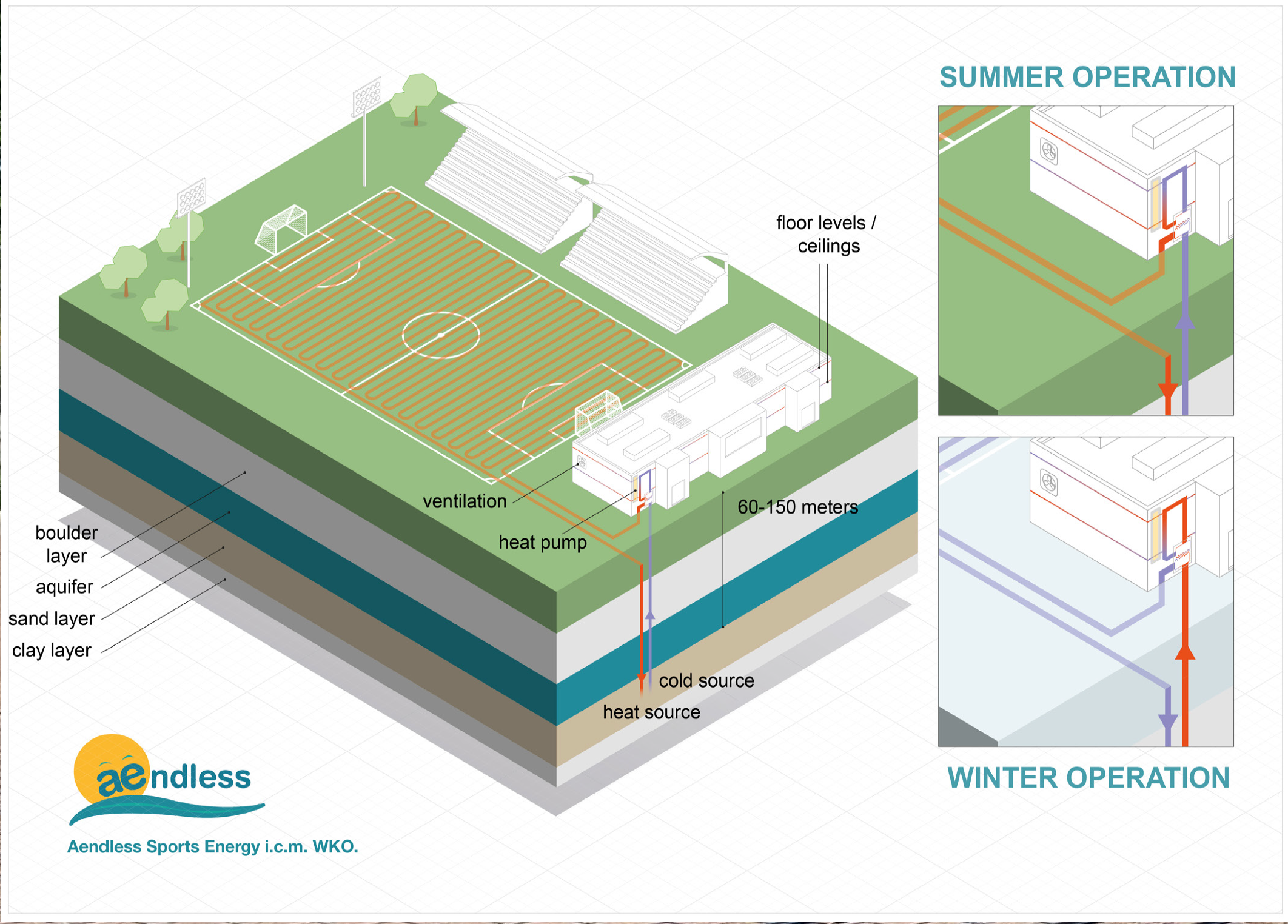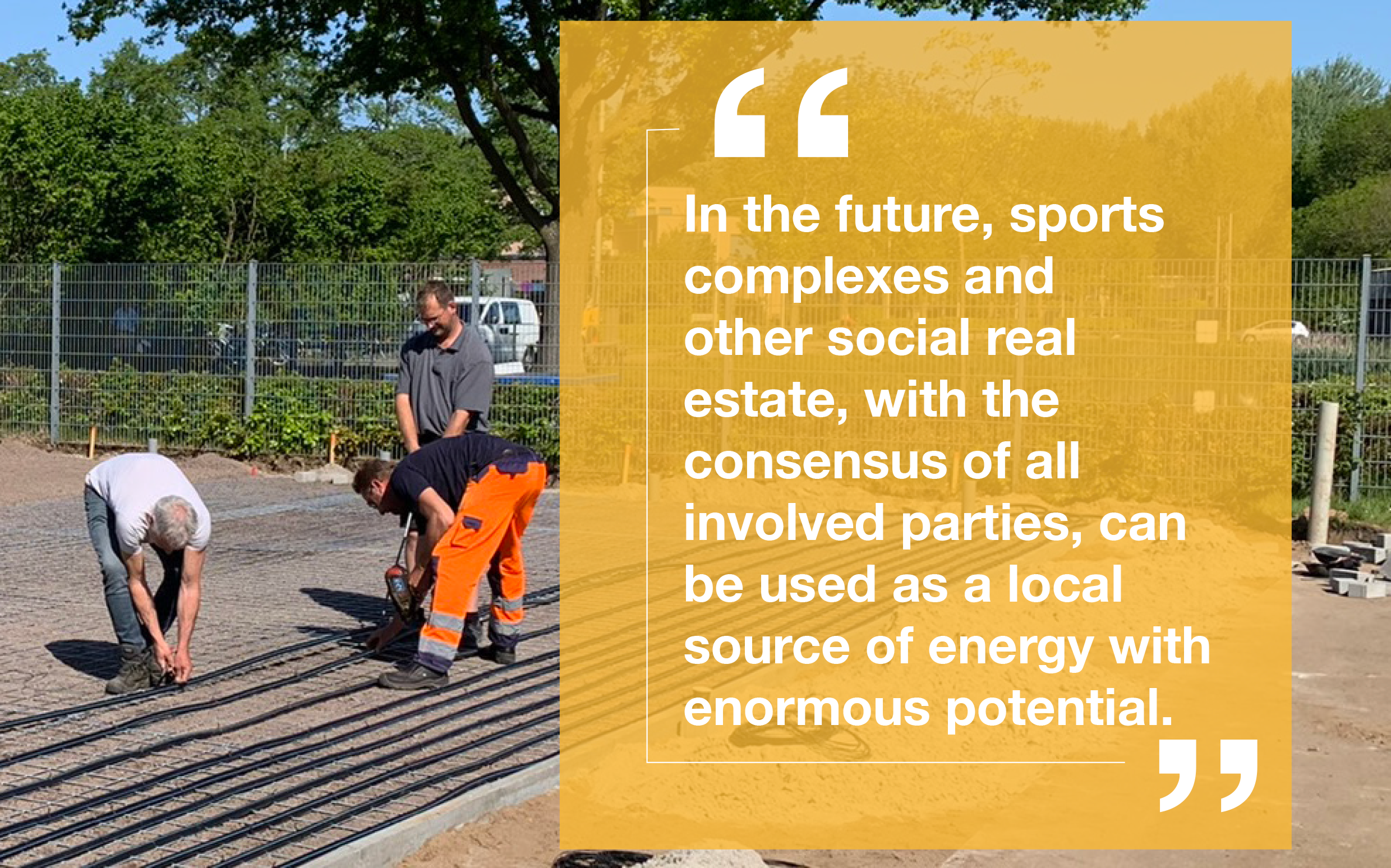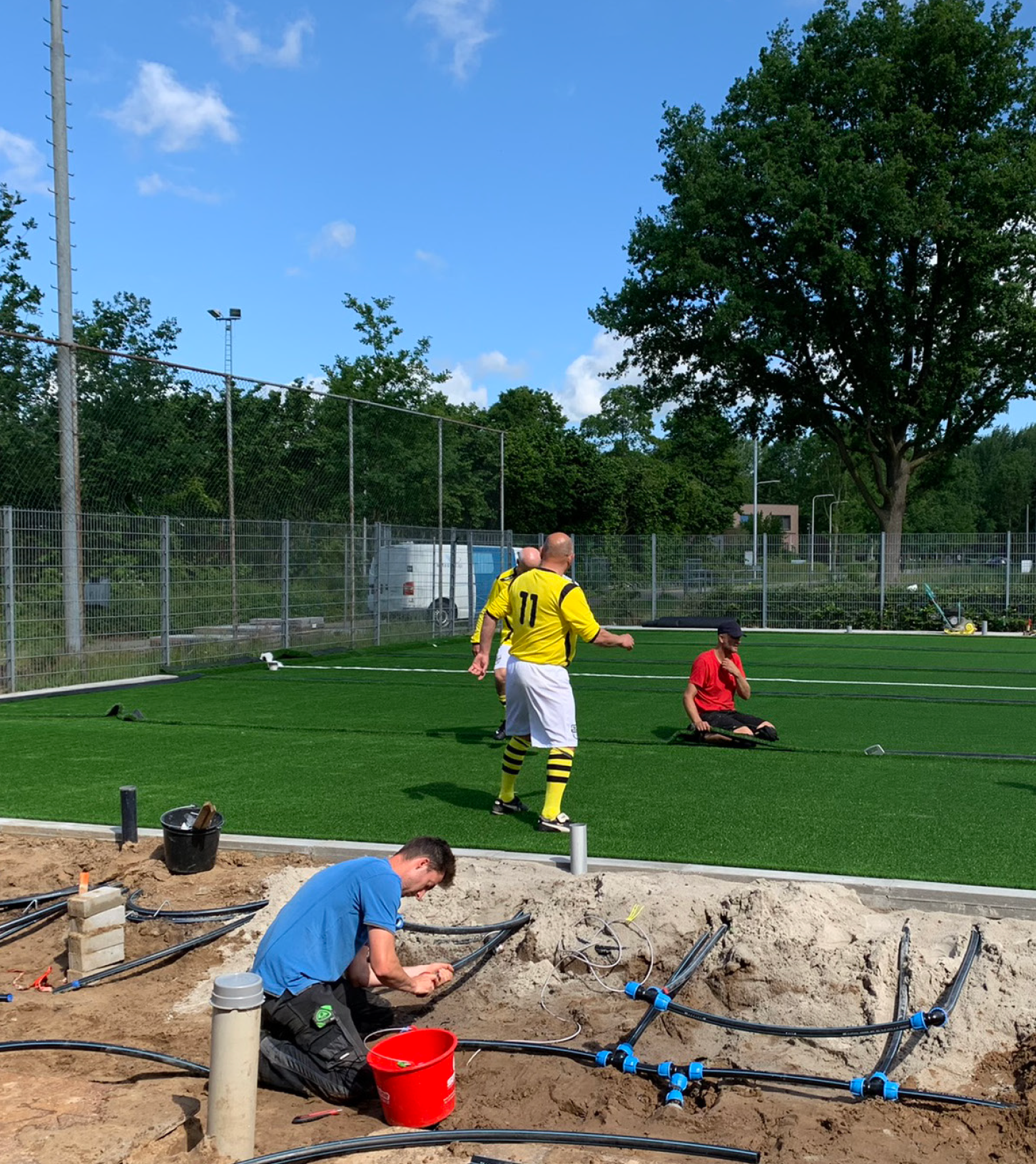SPORTS COMPLEXES AS A SOURCE OF ENERGY

Aendless Energy focuses on multiple uses of assets in outdoor spaces. In our transition towards a society without fossil fuels, it is becoming increasingly clear to stakeholders that the energy consumption of homes and other real estate must be based on a mix of local and decentralised energy.
By adding heat extraction functionality to existing or planned objects in outdoor areas, scarce space is optimally used, offering multiple advantages for users and managers. This technique has been around for some time for asphalt pavements. In 2022, a trial was successfully completed in Zwolle, applying the same principle to synthetic grass sports fields.

Everyone knows asphalt gets very hot in summer. Despite the fact that this technology has been around for almost 20 years, not everyone knows that this heat can be used to provide buildings with energy, in the form of heat, during winter. The
technology has other benefits, such as extending the lifespan of asphalt pavements by approximately 25% and contributing to less heat stress in built environments.
The double use of public space is not limited to asphalt. For example, Aendless Energy has been looking at several other objects in the outdoor space that can be used twice in the transition to a sustainable, gas-free energy supply. Our focus soon settled on artificial grass sports fields, which also get very hot in the summer, making them an ideal vehicle for the capture and collection of heat. The fact that they are usually large areas in close proximity to energy consumers is an
added bonus.
There are other benefits. Heat extraction under the field can cause the temperature just above the field to drop by up to 15 degrees. Test set-up results have now proven this. This cooling effect is beneficial for more comfortable sports on these fields and may even contribute to injury prevention. The beneficial effect on (inner-city) heat stress is also an advantage.
Co-operation
In Zwolle, in 2022, a test set-up was created, made possible in part by the Province of Overijssel, the municipality of Zwolle and Sport Innovator. Not only have they contributed financial resources, but also provided a pilot location and made their expertise available.
Antea Sport also joined in, supporting the design, construction and monitoring of the field, while ensuring the sports technical requirements were met. The University of Twente joined as a knowledge institute, ensuring the validation of measurement data. They have drawn up a model in which adjustments to the system can be calculated according to the
expected energy yield. Different types of field structures or turf are required because different sports have differing
requirements. The current trial has been done for a football field.

Test field
Aendless Energy constructed a 15m x 20m artificial grass test field at Marslanden Sports Park to test a number of techniques. In addition to measuring the degree and yield of energy, we also looked at how athletes in practice experience the damping and suspension of the field. Weather data and field surface temperatures were also monitored. The data collected during this period has been translated by the University of Twente to calculate the energy yield on the basis of standard annual averages (and included any deviation from the relevant period).
The outcome of the trial was that the energy yield of an artificial turf field looks very positive, greatly exceeding our expectations. Based on the four different structures that have been applied to this field, the objective is now to create a larger format field in 2023, using the most optimal structure in terms of energy yield and sports technical properties. This will also be linked to an energy consumer in order to gain better insight into the total functioning of the system.

Many stakeholders
In addition to the technical challenges, practical solutions are primarily a matter of organization. Who makes the investment and who bears the risk? Who owns the installation? Who sets the rates? Who pays for the ‘backup’ needed to store summer heat for use in winter? It is clear that many stakeholders are involved in future upscaling where public space is used twice as an energy source, therefore efforts must be made at policy level to ensure energy transition and the use of alternative sources becomes a fully-functioning reality.
The pilot project was an excellent example of co-operation between public and private parties. Bringing together and freeing various stakeholders to work as a team is one of the reasons that Roelofs and Strukton Civiel founded Aendless Energy in 2021. In order to keep the threshold as low as possible for all parties involved, Aendless Energy also help with the financing of projects.
Sports complexes as a source of energy
In the future, sports complexes and other social real estate, with the consensus of all involved parties, can be used as a local source of energy with enormous potential. For example, parking lots can be equipped with asphalt collectors and carports with PV(T) panels. The vast expanses of artificial turf fields and (where construction allows ) the roofs of the buildings like grandstands and locker-rooms can also be equipped with PV(T) panels to provide a mix of the required energy.
Aendless’s goal is to create and work in local collectives, where transparency and participation are key words and everyone benefits.
For more info see www.aendless.nl.